The Future of Pharmacy: Where Technology Meets Trusted Care
Pharmacies are on the front lines of healthcare delivery, making it essential to empower pharmacy teams with the tools necessary to help manage their operations.
Pharmacies are on the front lines of healthcare delivery, facing a complex and evolving landscape with intensifying workforce constraints. It’s more important than ever to empower pharmacy teams with the tools necessary to help manage their operations. Fortunately, the industry is embracing artificial intelligence, and a variety of other technological tools, to enable pharmacy operations to adapt and empower pharmacists to focus on what matters most: patients.
Automation and intelligent systems are transforming the way pharmacies do business by streamlining workflows to reduce costs and increasing efficiency to more effectively engage patients. In fact, global pharmacy automation is expected to grow by as much as
To help pharmacy teams navigate today’s complex landscape, three technology-driven approaches are proving to be especially impactful: centralized fulfillment, intelligent inventory automation and AI-enhanced procurement.
Central Fill: Powering Scalability Without Sacrificing Accuracy
One of the clearest examples of smart automation is central fill, which allows pharmacies to offload routine fulfillment tasks to centralized facilities. The system redirects fulfillment to a centralized location where prescriptions are filled, labeled, verified and prepared for delivery, freeing up in-store staff to focus their time on patient care while minimizing errors throughout the fulfillment process. The system maximizes throughput and accuracy by leveraging automation to streamline high-volume prescription processing, supporting scalable pharmacy growth. A study published in the Journal of the American Pharmacists Association found that
At McKesson, we’re expanding independent pharmacy access to this model through solutions like Central Fill as a Service™ (CFaaS®), which allows community pharmacies to outsource high-volume dispensing without major infrastructure investments. By reducing their manual workload, CFaaS® enables local pharmacists to refocus on direct patient care and expand clinical services.
Supplylogix: Taking the Guesswork Out of Inventory
Managing inventory has long been one of pharmacy’s most resource-intensive tasks, and Supplylogix solutions optimize inventory management by connecting real-time inventory levels with automated ordering systems. These systems use software, sensors and other technologies to monitor stock, predict how much product is going out the door, and trigger potential purchases when the facility needs more inventory.
Automation minimizes manual oversight by linking inventory to projected demand, helping pharmacies optimize supply levels. This advanced fulfillment model ensures fast-moving medications are readily available, minimizing stockouts, and improving inventory performance.
Pinpoint Community Solutions is powered by Supplylogix algorithms for independent pharmacies, creating an automated and streamlined way to make inventory management more efficient by triggering potential replenishment orders based on stock thresholds, seasonal trends and usage histories. As a result, inventory investment is reduced, and independent pharmacy teams can spend less time checking inventory and more time counseling patients on their prescriptions.
AI and Generative Tools: Procurement with Precision
Beyond fulfillment and inventory, automation is also significantly enhancing procurement decisions to drive further efficiencies and cost savings. For example, McKesson has developed a generative AI-driven recommendation engine that automatically provides alternative cost-effective medication alternatives for pharmacists, enabling them to easily identify the right generic drugs for each patient.
By integrating automation into decision-making processes, pharmacies can reduce administrative burden, improve accuracy, and focus more on delivering personalized care. It’s important that pharmacies continue to lean into tools and technologies that enhance the patient experience while managing their operations and bottom lines more efficiently.
Workflow Automation Is Foundational, Not Optional
In today’s pharmacy environment, automation is not an option; it is a necessity. CFaaS®, Supplylogix and other tools are not just operational upgrades, but foundational components of a pharmacy infrastructure built for the demands of modern patient care.
By investing in these systems now, pharmacies can do more than streamline fulfillment and optimize labor; they can reimagine their roles within the complex healthcare ecosystem, becoming increasingly accessible, efficient and streamlined points of care. The path forward is clear: when we equip pharmacy teams with the right tools, we can unlock their full potential to lead the future of care and achieve better health outcomes for all.
Newsletter
Pharmacy practice is always changing. Stay ahead of the curve with the Drug Topics newsletter and get the latest drug information, industry trends, and patient care tips.


































































































































